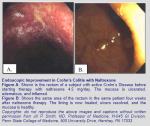godlovesatrier
Senior Member
- Messages
- 2,610
- Location
- United Kingdom
Low-dose naltrexone as a treatment for chronic fatigue syndrome (2020)
First published: Jan 2021
https://casereports.bmj.com/content/13/1/e232502
Authors:
Authors
Treatment Case Studies
Treatments
First published: Jan 2021
https://casereports.bmj.com/content/13/1/e232502
Authors:
Authors
- Monica Jane Bolton
- Patient, Manchester, UK
- Bryan Paul Chapman
- Patient, West Sussex, UK
- Harm Van Marwijk
- Department of Primary Care and Public Health, Brighton and Sussex Medical School, Brighton, UK
Abstract
Naltrexone is used as an off-label treatment in low doses for several chronic immune-modulated disorders in many countries. Although only small-scale clinical trials have been performed, these suggest efficacy in several diseases including Crohn’s disease, fibromyalgia and Gulf War Illness. Despite numerous internet reports of response to low-dose naltrexone (LDN), no clinical trials exist in people with chronic fatigue syndrome. This condition is characterised by chronic profound fatigue, postexertional malaise, pain and autonomic and neurocognitive disturbances. This series of three case reports compiled by people with long-term ill-health due to chronic fatigue syndrome shows the range of responses they observed when taking LDN, from life changing to a reduction in some symptoms only. Treatment doses ranged from 4 to 12 mg. Clinical trials may be warranted to explore the potential use of naltrexone in people with these debilitating illnesses which currently have no licensed treatments available.
Treatment Case Studies
Patient’s perspective
Case 1
For me, low-dose naltrexone was truly life changing. From being virtually house bound, always limited by a multitude of symptoms, pain and low energy, I found my life returning. Every treatment or therapy I had tried previously involved effort—pacing myself, training myself, coping with symptoms. With low-dose naltrexone, the improvement just happened—I didn’t have to try, I just got better. I went for walks and started cycling again. The first time I ate out when I was no longer limited by food allergies, I could select from the whole menu—the shock of all that choice! My husband commented I was no longer a shadow of a person but a genuine companion again. From being unable to string sentences together coherently for much of my adult life, I returned to university and gained a distinction in a Master of Research degree, when aged 62!
Case 2
After 25 years of living with the devastating effects of myalgic encephalomyelitis, I was struggling to cope with the limited options for symptom and pain management. Having had many bad reactions to medications, I was hesitant to try a medication that would affect my immune system so I started out at an extremely low dose and slowly increased dosage. While the dreaming was at times disturbing, the positive changes gave me a hope for improvement I had not had in many years. The subsequent improvements have led to a much higher quality of life and I would like to see this medication as an approved option for others in my situation.
Case 3
Since I was 14 (when I had my first chronic fatigue episode), whenever I have had any form of illness I have suffered from depressive episodes, including needing to withdraw socially and becoming very insular. This included the period prior to any illness, where I have felt run down or could tell a cold etc was forming. I started taking low-dose naltrexone when I was 37 and for the first time in 23 years, I have not had a depressive episode linked to colds or any other illness. Low-dose naltrexone has really helped improve my quality of life and also helped in social situations where I am not withdrawing and being insular like I had been previously.
Treatments
Treatment: case 1
She tried various alternative treatments with little improvement. She improved slightly while taking antibiotic combinations including phenoxymethylpenicillin and azithromycin for a year in 2006 but relapsed rapidly on stopping them. She was started on oral vitamin D supplementation in 2009, although this did not improve her symptoms of fatigue. As she has had polymorphic light eruption since her midteens, she remains on colecalciferol 20 000 IU every 2 weeks and now has normal vitamin D levels.
In 2010, she was prescribed LDN, initially at 1.5 mg, slowly increasing the dose over 2 years. She noticed slightly increased energy and reduced food intolerances while taking 4.5 mg/day but needed to reduce the dose to 3 mg due to increased headaches. Ten months later, she started increasing the dose again without recurrence of symptoms, and subsequent stepped dose increases coincided with further improvements in energy, mood and pain. At 9 mg, the frequent episodes of abdominal pain subsided, and she started eating a full diet, including wheat and dairy. Her prescribing doctor suggested experimenting to find the optimum dose of LDN, and after increasing to 7.5 mg two times per day, she settled on 6 mg two times per day, which she has taken for the past 7 years.
Treatment: case 2
Many therapies have been tried, including antiviral agents for reactivated Epstein-Barr virus, with limited success.
She was prescribed LDN in 2014 when 54 years old. Due to known immune hypersensitivity (urticaria), the dose was started very low, at 0.25 mg/day, and increased very slowly over 4 years to the present dose of 4 mg. Initially, her sleep was disturbed by vivid dreaming. At about 6 months, when on 1 mg/day, she noticed improved sleep and lower pain levels, and these symptoms continued to improve as the naltrexone dosage was increased
Treatment: case 3
In 2018, when aged 37, he started LDN, initially at 1 mg/day, increasing to 4.5 mg, which he still takes. He had no side effects starting the drug.

